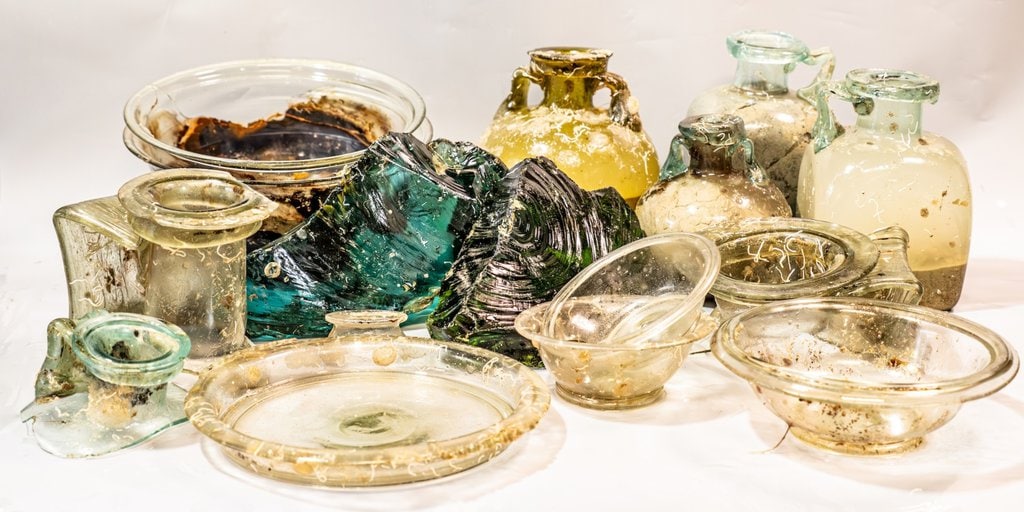Thousands of pieces of glassware were recently recovered by archaeologists from a 2,000-year-old ancient Roman shipwreck, and many of the pieces were perfectly preserved. The shipwreck is located 1,148 feet below in the waters between France and Italy and is now known as the Capo Corso 2.
Ancient Glassware in a Shipwreck

Capo Corso 2 lies on the surface between Italy’s Capraia island and France’s Cap Corso peninsula. According to Italy’s National Superintendency for Underwater Cultural Heritage, marine archaeologists from both France and Italy teamed up and explored the wreckage in early July. Other researchers also took part in the study of the wreck, including experts specializing in ancient glassware, underwater conservation, and marine ecology.
The wreck was discovered back in 2012 by engineer Guido Gay. Archaeologists then completed the initial survey of the site a year later, in 2013, and went back a second time for more analysis in 2015. This summer, a team of international researchers revisited the wreck using the remotely operated vehicles called Arthur and Hilarion. The vehicles conducted thorough scans of the site and looked for changes that may have occurred within the wreck over time. Researchers also used Arthur’s mounted claw system and recovered some artifacts from the wreck.
The Wreck Was a Roman Ship

The remotely operated vehicle Arthur pulled out some Bronze Age amphorae, two bronze basins, and notably, a large collection of glass tableware objects. The glassware included cups, bowls, bottles, and plates. The archaeologists took those artifacts to an Italian laboratory where further study and restoration will be done.
The team also discovered raw glass blocks on the ship, which were found in various sizes among the wreck. Based on the glassware, the researchers have concluded that the ship was traveling from a Middle East port – like Syria or Lebanon – and was likely heading toward the French Provençal coast.

While artifact recovery is certainly great for the researchers, they also wanted to assess the biological state of the wreck. This interest was due to the fact that shipwrecks often become artificial reefs where sea life takes over after a period of time. The wrecks of ships are great for thriving ecosystems where marine organisms can attach themselves to their surfaces.
According to archaeologists, the wreck can be dated to the end of the first century or the beginning of the second century CE. More information about it will certainly be uncovered as the study of the recovered artifacts continues. Ultimately, the wreck should help the team reconstruct a page in the history of the Mediterranean trade, especially considering its exceptional nature.